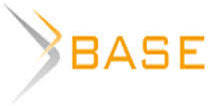ЕВРОПЕЙСКАЯ КРЕДИТНАЯ СИСТЕМА ОБРАЗОВАНИЯ
Aннотация
В статье представлено описание процесса создания единого образовательного пространства Европы, дана общая характеристика Европейской кредитной системы образования. Выявлены преимущества и недостатки кредитной системы образования, рассмотрены принципы Европейской кредитной системы образования. Исследован процесс оценки качества знаний
Ключевые слова: Образовательное пространство Европы, кредитная система образования, принципы Европейской кредитной системы образования, оценка качества знаний
К сожалению, текст статьи доступен только на Английском
Introduction. Most credit systems were developed and began to be introduced at some stage of socio-economic development of the countries. Its main feature – the existence and the deep penetration of market relations in all areas of public life. Such systems are widely used and have become an indispensable tool in market national models of education. So advantages, disadvantages and prospects for the development of credit systems aimed at the accumulation of educational credits, are objective due to market character education. Selecting one of the credit system as a model for borrowing, as well as development of a national credit system, requires a special study.
Extremely important aspect is the international recognition of qualifications. This kind of qualification improves mobility, thus facilitating the transition from education to the top of a career or further professional growth anywhere in the world. In Europe, a number of tools designed to ensure the relevance and recognition of qualifications in any country of the world.
The European system of accumulation and transfer of credits (ECTS) has been introduced to ensure recognition of study periods abroad and, consequently, improve the quality and scale of student mobility in Europe. Recently ECTS becomes a system of accumulation and increasingly recognized standard for national credit systems.
These provisions define the particular relevance of the chosen research topic.
Main part. The object of research is the European credit system of education. The subject of research is principles of the European credit system of education. The purpose of this work is to study the European credit system of education.
To achieve this goal we have been set and solved the following tasks: description of the process of creating a single European educational space; representation of the general characteristics of the European credit system of education; identify the advantages and disadvantages of the credit system of education; study of principles of the European Credit educational system; study of the evaluation process of the quality of knowledge.
The content of these tasks defines the content and logic of this work.
The main research methods were selected analytic, descriptive and comparative benchmarking methods.
University education in Europe is identified in three different systems: the Anglo-Saxon, French, Spanish and German and Italian systems. However, some of the common values of the new century are universal to all European universities:
- freedom of research and teaching as a fundamental principle of the existence of the University;
- research and teaching as a non-breaking levels of university education;
- University contributions to the sustainable development of society as the most important activity of the University;
- strengthening the responsibility of national governments for higher education as a priority of their work [7].
After the destruction of the Soviet Union the transition from a bipolar world to a monopolar lead to an increase in US hegemony. Because the future of world order is predetermined, mainly education counterweight could be only the creation of a single European educational space.
Consider the basic stages of the process:
1) 1988 – signing of the Magna Carta Universitatum;
2) 1997 – adoption of the Lisbon Convention;
3) 1999 – the signing of the Bologna Declaration.
It should be noted that the trend towards mass higher education systems in developed countries is due to the desire of these countries to gain a foothold in the global market. Previously, it was believed that the admission to higher education for more than 20% of high school graduates will stimulate the growth of mediocrity. Now this opinion has changed - the developed countries have dramatically increased the contingent of admission to universities.
According to the classification Trow in training up to 15% of young people aged 16-24 years in the universities can talk about elite education. If this number exceeds this limit, it is necessary to speak about mass higher education is higher than the general higher education [5].
ECTS system contributes to the goals of the Bologna process, facilitating interpretation and comparison of training programs for local and foreign students, as well as promoting the mobility and academic recognition.
Non-recognition and lack of capacity assessment of qualifications are now a global problem. The Diploma Supplement (DS) – is a document attached to a higher education diploma and provides a standardized description of the nature, level, context, content and status of the training course successfully passed graduate. The Diploma Supplement provides the necessary transparency and facilitates academic and professional recognition of qualifications (diplomas, degrees and certificates) [4].
DS offers students: diploma, more readable and easily comparable abroad; a precise description of their academic career and skills acquired during the training period; objective interpretation of their achievements and competencies; easier access to work or further training abroad; more job opportunities [8].
The European Charter for Mobility – a guide for those who move to other countries for the purpose of formal and informal learning. It is intended for students, trainees, volunteers, teachers and trainers who want to improve their skills. The Charter consists of 10 principles to be applied on a voluntary and flexible basis.
The European Qualifications Framework for lifelong learning (EQF) should become interlink all national qualification systems in the EU. This will simplify the interpretation and translation of qualifications, as well as enable citizens to easily move from one country to another for work or study. Over time, the EQF will apply to all types of qualifications obtained after the end of compulsory education. The core of EQF – eight reference levels, based not on the original data on training (course duration, type of institution) but rather on its results (what knowledge the student has acquired).
Network ENIC (European network of information centers for the academic recognition and mobility) provides information on:
- recognition of foreign diplomas, degrees and other qualifications;
- educational systems in other countries, as well as in the country ENIC;
- possibilities of studying abroad, including information on loans and scholarships;
- recommendations on practical issues related to mobility and equivalence.
The network NARIC (National Academic Recognition Information Centres) is designed to improve the academic recognition of diplomas and periods of study in the EU Member States and the European Economic Area [9, p. 265].
The specific advantages of ECTS should be attributed above all its flexibility. Each student chooses his own path of accumulation of the required number of credits, and therefore the system allows you to effectively implement the concept of individualization of the learning process. However, the advantage of ECTS is not only providing individual training schedule, taking into account the needs of the student, but also the ability to create personal training time. A student on his own initiative sets the pace or speed of moving forward according to personal abilities and interests. This allows you to acquire the appropriate training program earlier or later than the scheduled dates.
To the main disadvantages of credit systems should include the weakened role of public authorities in the management of education regarding the impact on the course of implementation of the credit system and, consequently, a possible departure from the profession of the philosophy of education, according to which the main responsibility for education lies with the state.
European educational space in the competition opposes itself to the US and rapidly developing eastern formations, resulting in a developed and put into action the Bologna process. For more than fifteen years, the European educational community lives under the sign of the Bologna Process. It is based on the commonality of principles of operation, which include:
- a two-level learning process: Bachelor (3-4 years) and Master (1-2 years);
- credit-modular system of educational process;
- student mobility between universities in different countries and between universities in one country;
- training throughout life;
- ensuring the quality of education and the establishment of universally accepted criteria and methodologies for its assessment;
- the student must be trained to find a job in the existing labor market;
- the university becomes a mediator between the employer, society and the student.
Let us consider in more detail some of the principles of the Bologna process. In Europe (throughout the EU) student mobility is more than 750 thousand people a year. That number is now three to four times higher than the number, for example, the Italian army, is growing by entering new countries in Eastern Europe, the uneven distribution of production capacity, a decrease in average prices for education and many other factors.
Credit-modular system is based on two elements. Credit – a measure of the magnitude of the complexity of the discipline, a kind of «euro» in the education of the student (by analogy with the familiar to the Russian education system by measuring the labor intensity in academic hours). In order to learning outcomes were comparable, they must be evaluated in the framework of a general system. The second component of credit-modular system - a module - a part of the educational program or academic discipline, has a certain logical completeness in relation to the purposes and results of training [10].
It should be noted recorded in the first lines of the Charter – Universities serve the whole society, as one of their main tasks in the new stage of the global educational and economic system. Is precisely this proposition demonstrates the transformation of universities from elite schools for the ruling classes in the establishment of the mass available for the majority of the population. Noteworthy is also a «green» the Charter stresses the need to respect the great harmony of nature.
Only respect for national traditions and characteristics of the future of Europe opens up for everyone, «Europe of knowledge» becomes a guarantor of such moving forward. It can be argued that the loss of someone seemingly insignificant elements of national culture is irreplaceable and the importance is not inferior to the loss of genetic branches of the disappearance of the species in the wild.
Magna universities became not only a declaration of objectives and the need for the democratization of university life, but also for the first time introduced the basic concepts of higher education, gave mechanisms for implementing the proposed approaches. Its provisions are the basis for improvement of national legislation in many countries and led to the development of a significant number of international instruments in the field of recognition of education and protect the rights of members of the academic community in the higher educational institutions [6].
According to the standard quality of assessment is carried out at a rate of structure. The main criterion for identifying the relationship between the national systems of assessment is the comparative evaluation of the quality factor of the two systems of education. If it is less than unity, then this means that the «pass rate» in the host country above. If equal to one, the «passing grades» countries are equal [2]. If more than one, then the «pass mark» of the host country is below [3].
Credit Weight (credit assessment capacity) discipline shows her the complexity and depth of study. As a rule, credit the weight of disciplines coordinates only within one specialty (direction) of a particular university (faculty). Such local determination may be ineffective. For example, a study of discipline «Theory of formal languages» (TFYA) in Linguistic University students may require substantially more costs than in a technical college, where there is enhanced mathematical training. As a result, the number of credits for TFYA in linguistic high school will be given more than a technical.
Lending weight subjects for the entire territory of the educational space can be agreed only centralized way. An effective mechanism for resolving the problem may be the original definition of the base credit balance at the level of state educational standards (GOS), and comparison of each region, university, faculty, specialty, or even the teacher of certain factors that change the basis weight.
Credit system can be used as a mechanism of formation and mediated display needs of production and services. For this purpose you must monitor and identify the needs for expertise, their qualifications and characteristics to perform the modification of the credit matrix coefficients. The Russian and foreign publications sometimes focuses on the need for competence-based approach in calculating the complexity of educational work according to the acquired knowledge, skills vaccinated, to develop the skills needed in the future professional activity.
The most important characteristics of credit-funded higher education system – academic performance – have two parameters: a quantitative and qualitative. Quantitative parameters of education loans are determined, and the quality is determined by the estimates. However, credit-funded higher education system only has her has another new parameter education - setting competencies.
Conclusions. The Lisbon Convention on the Recognition of Qualifications concerning Higher Education in the European Region, initiated the formation of a European educational space.
If the «world educational space» - the concept is very abstract (indeed, each national system can be regarded as part of the latter), the term «European educational space» (after the adoption of the Magna Carta, the Lisbon Convention and, in particular, of the Bologna Declaration) has acquired quite specific features.
Credit-modular system is based on two elements: credit - is a measure of the value of the complexity of discipline, a kind of «euro» in the education of the student (by analogy with the measurement of labor input in academic hours). In order to learning outcomes were comparable, they must be evaluated in the framework of a general system. When calculating the complexity of the main educational programs of higher professional education in credit units are taken into account:
- one credit unit corresponds to 36 academic hours total workload duration of 45 minutes (or 27 astronomical hours);
- maximum volume student workload per week is 54 academic hours (1.5 credits);
- calculation of labor input the discipline in credit units made on the basis of its division of labor input in academic hours 36 rounded to 0.5 by the established rules;
- one week of practice expressed 1.5 credits;
- one semester exam expressed one credits (three days training and one day of the exam).
Credit units receive only those students who have successfully passed the final examination for the discipline (credit or examination). If student heard the course, but could not pass the final inspection in the prescribed form, it does not get credits for this discipline.
The second component of credit-modular system - a module - a part of the educational program or academic discipline, has a certain logical completeness in relation to the purposes and results of training.
















Список литературы